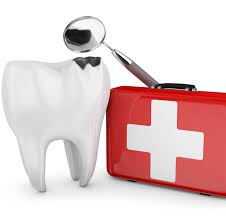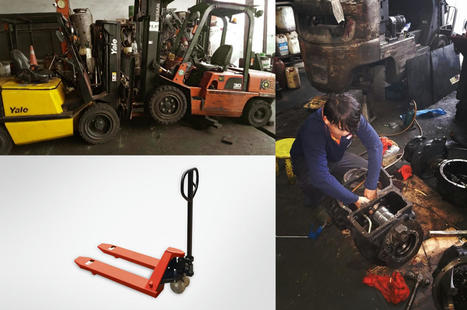
Comprehensive Guide to Emergency Dental Care Services
Introduction
Dental emergencies can strike at any time, causing pain, discomfort, and anxiety. Understanding how to handle these situations and knowing where to seek help can make a significant difference in outcomes. This guide provides an in-depth look at emergency dental care, covering common scenarios, immediate actions, and preventative measures to keep your dental health in top shape.
What Constitutes a Dental Emergency?
Dental emergencies encompass a wide range of situations, from sudden tooth pain to severe injuries. Here are some common examples:
- Severe Toothache: Persistent and intense tooth pain that doesn’t subside with over-the-counter painkillers.
- Chipped or Broken Tooth: Damage to the tooth structure that can cause pain and sensitivity.
- Knocked-Out Tooth: A tooth that has been completely dislodged from its socket.
- Loose or Dislodged Filling: Loss of a filling, crown, or other dental restoration.
- Abscessed Tooth: A severe infection at the root of a tooth or in the gums.
Immediate Steps to Take in a Dental Emergency
Acting quickly during a dental emergency can help mitigate damage and relieve pain. Here’s what you should do in some common scenarios:
Severe Toothache
- Rinse Your Mouth: Use warm water to rinse your mouth thoroughly.
- Floss Gently: Remove any trapped food particles between your teeth.
- Apply a Cold Compress: Use an ice pack on the outside of your cheek to reduce swelling.
- Take Pain Relievers: Use over-the-counter pain medication, but avoid aspirin, as it can increase bleeding.
Chipped or Broken Tooth
- Save the Pieces: Collect any pieces of the broken tooth and rinse them with warm water.
- Rinse Your Mouth: Use warm water to clean your mouth.
- Apply Gauze: Use gauze to stop any bleeding.
- See a Dentist: Visit your dentist as soon as possible.
Knocked-Out Tooth
- Handle with Care: Pick up the tooth by the crown (top), not the root.
- Rinse Gently: If dirty, rinse the tooth with water. Do not scrub or remove any attached tissue.
- Reinsert if Possible: Try to place the tooth back into the socket. Hold it in place by biting down gently on a clean cloth.
- Keep Moist: If reinsertion isn’t possible, keep the tooth moist in milk or saline solution.
- Seek Immediate Dental Care: Time is critical—visit your dentist or an emergency dental clinic right away.
Loose or Dislodged Filling
- Temporary Filling: Use dental cement from a pharmacy to temporarily fill the gap.
- Avoid Eating on That Side: Try not to chew food on the side of the lost filling.
- Visit Your Dentist: Make an appointment with your dentist as soon as possible to get the filling replaced.
Abscessed Tooth
- Rinse with Saltwater: Mix salt in warm water and rinse your mouth several times a day to reduce pain and draw out pus.
- Take Pain Relievers: Use over-the-counter medication to manage pain.
- Seek Immediate Care: An abscessed tooth requires prompt dental treatment to prevent the spread of infection.
When to Visit the Emergency Room
Certain dental emergencies might necessitate a visit to the emergency room (ER) instead of waiting for a dental appointment. Situations warranting an ER visit include:
- Severe Swelling: Especially if it affects breathing or swallowing.
- Uncontrollable Bleeding: Bleeding that doesn’t stop after applying pressure.
- High Fever: Fever along with dental pain, which could indicate a spreading infection.
- Trauma to the Face or Jaw: Injuries that may involve broken bones or require stitches.
Finding Emergency Dental Care
Knowing where to go for emergency dental care is crucial. Here are some options:
- Regular Dentist: Many dentists offer emergency services or have after-hours contact information.
- Emergency Dental Clinics: Specialized clinics that provide immediate care for dental emergencies.
- Hospital ER: For severe cases involving facial trauma or life-threatening conditions.
Preventative Measures to Avoid Dental Emergencies
Preventing dental emergencies involves maintaining good oral hygiene and taking precautions. Here are some tips:
Regular Dental Checkups
- Biannual Visits: Schedule checkups and cleanings twice a year.
- Early Detection: Regular visits help catch potential issues before they become emergencies.
Proper Oral Hygiene
- Brushing: Brush your teeth at least twice a day with fluoride toothpaste.
- Flossing: Floss daily to remove plaque and food particles between teeth.
- Mouthwash: Use an antiseptic mouthwash to reduce bacteria.
Protective Gear
- Mouthguards: Wear a mouthguard during sports to protect against dental injuries.
- Nightguards: Use a nightguard if you grind your teeth during sleep.
Avoiding Harmful Habits
- No Chewing on Hard Objects: Avoid chewing on ice, hard candies, and pens.
- No Opening Packages with Teeth: Use scissors or appropriate tools to open packages.





